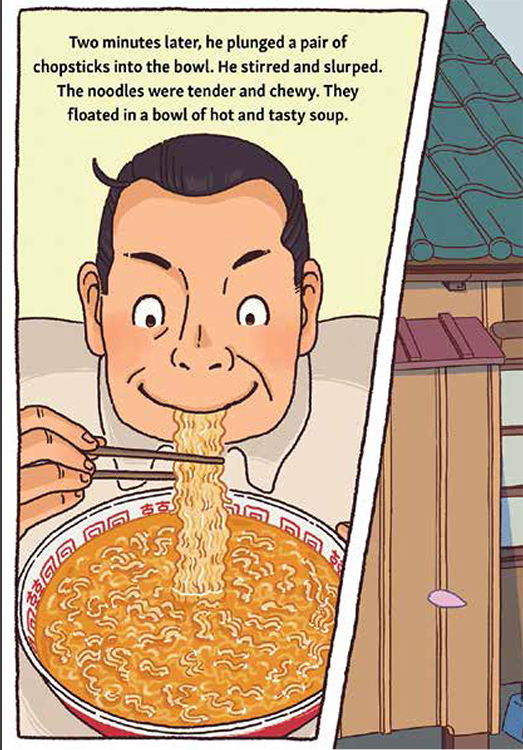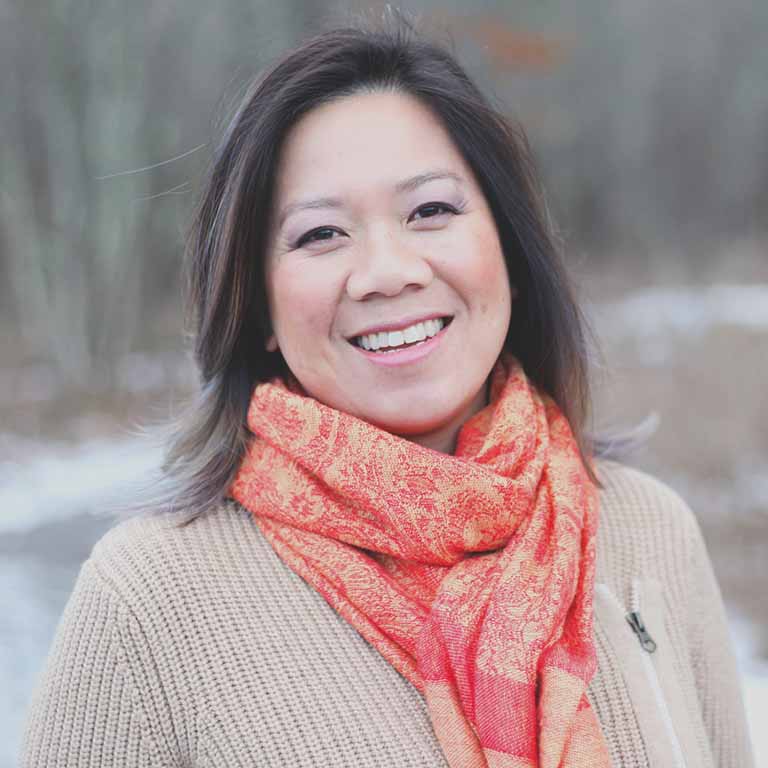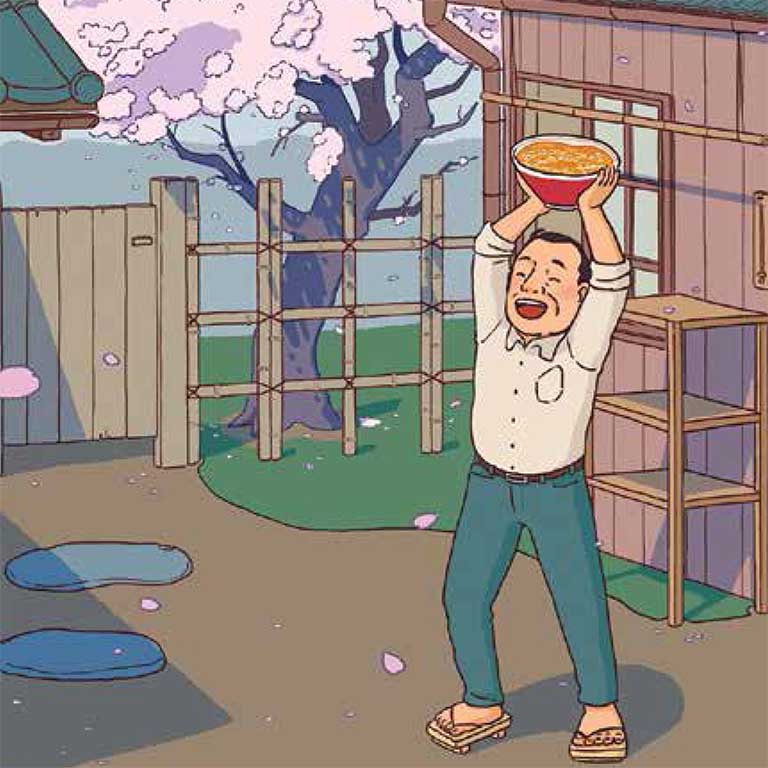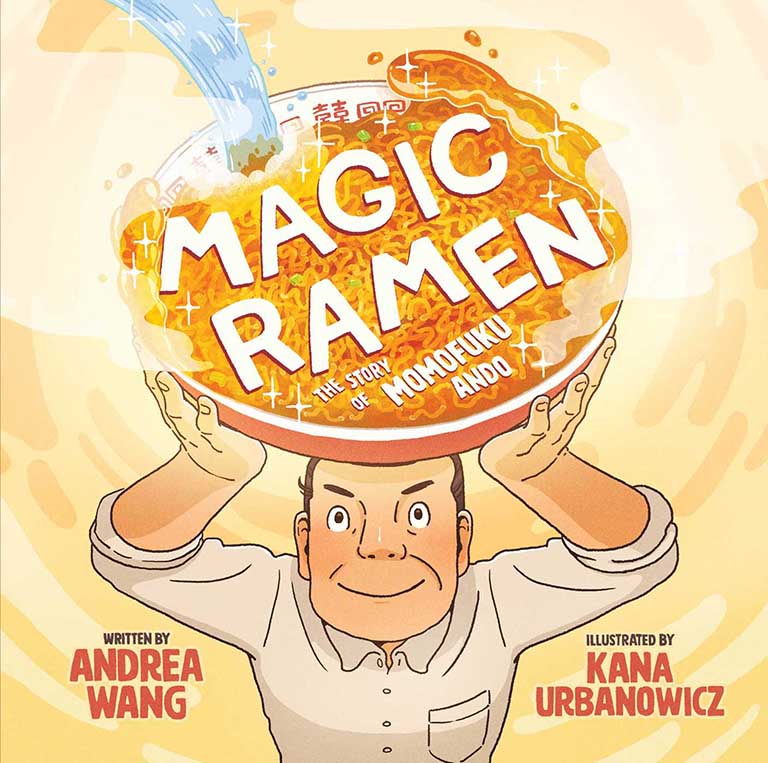The Post-SPEA Adventures of Andrea Wang
By Emily Cox
The Post-SPEA Adventures of Andrea Wang
By Emily Cox


As Ando watches his people starve, the businessman is motivated to create a cheap, easy, and nutritious way to feed his people that won’t spoil. After lots of trial and error, he realizes while watching his wife fry tempura that hot oil can make noodles crunchy and – ta da! – instant ramen is born. Ando’s neighbors are fed . . . and so are future generations of college students.

At least, that’s how children’s author Andrea Wang MSES’94 tells it in her forthcoming book, Magic Ramen: The Story of the Invention of Instant Noodles (Little Bee Books 2019). Wang says the inspiration for Magic Ramen came from watching her kids enjoy the popular comfort food. “I wondered, ‘Who created this?’ As I researched the answer, it became a story.” Wang uses Ando’s experimentation process with different cooking methods and ingredients like spinach and powdered milk to demonstrate the scientific method.

By focusing on ramen’s altruistic origins, she also connects science to helping others. In this biographical picture book, Momofuku Ando is not just the creator of a convenient and versatile noodle dish. He’s also a scientist, chef, and humanitarian. In her own story, Andrea Wang also plays many roles. She is not just a children’s author. She’s also a mother, environmental scientist, and keen observer of the natural world.
As an undergraduate at Wellesley College, Wang fell in love – with the idea of being outdoors, that is. In a plot twist, she ditched her plans for medical school and enrolled in the environmental science master’s program at SPEA.
On her journey to become a children’s author, a chapter in Bloomington might not seem directly relevant to the narrative. But Wang does use the skills she picked up at SPEA to shape her stories.
“I try to make the setting a character,” she says. For a contemporary coming of age novel she’s currently writing, Wang pulled out her old field guides to try to capture the sensation of being surrounded by the pine forests she remembers from her childhood in Ohio. “Part of that stems from being out in the field during my SPEA courses. We paid close attention to the plants, animals, insects, and habitat as a whole when observing an ecosystem.”
After SPEA, Wang worked as an environmental consultant focusing on human health and environmental risk assessment. But as new characters were introduced to her story (children, that is), she realized that the hours consulting required were not conducive to her new role as “Mom” and traded time at the office for time at the library. She’s happy with her choice but acknowledges the trade-offs.
“I miss the comradery – working with my peers and collaborating with geologists and engineers. Although there’s a wonderful community in children’s lit, writing is very solitary. What I don’t miss is trying to balance the political aspects of consulting against the actual science.” As she spent more and more time reading with her children, her latent passion for writing resurfaced. Wang took online courses and went to writing conferences, eventually getting her MFA from Lesley University in Cambridge.
When a monthly science magazine for children, Odyssey, put out a call for articles on urban ecology, Wang submitted a piece on birds that have become nuisance species. (Odyssey has since merged with another children’s magazine, Muse.) From there, she was hired by a write-forhire editorial firm that works with educational publishers to author nonfiction books especially for school libraries. Several of Wang’s projects covered environmental topics like fossil fuel pollution and oil spills – which her background made both easy to write and hard to edit. “There was so much I had to leave out,” says Wang. “For example, the content expert assigned to review my manuscript of The Science of an Oil Spill not only insisted that I read the entire 398-page government report on the Deepwater Horizon oil spill, but also wanted me to use the scientific term for charismatic megafauna. I couldn’t – the book was meant for fourth graders!”
Wang has since signed with a literary agent and loves having the freedom to work on her own projects. She especially enjoys writing for eight- to ten-year-olds. “Kids of that age are very open to new ideas. They ask great questions and think outside the box.”
Her picture book The Nian Monster (Albert Whitman & Company 2016), a retelling of an ancient Chinese New Year story, was the first book that felt fully hers. The Nian Monster recently won an Honor Award from the Asian Pacific American Librarians Association. In addition to Magic Ramen, Wang has sold two more picture books that will be published in 2020 or later – both about food and culture, and how they bring people together.
There may be no true happily ever after for a working author, as the inspiration for each new book represents a beast that must be vanquished. However, Wang is happy to continue her journey wherever it leads and encourages her fellow SPEA alumni to join her. “I hope you will consider writing, whether it’s for kids or adults. We need your ideas out in the world! It’s especially wonderful to expose kids to all of the different careers out there, whether that’s through fiction or just by writing articles that talk to kids about the environment.”